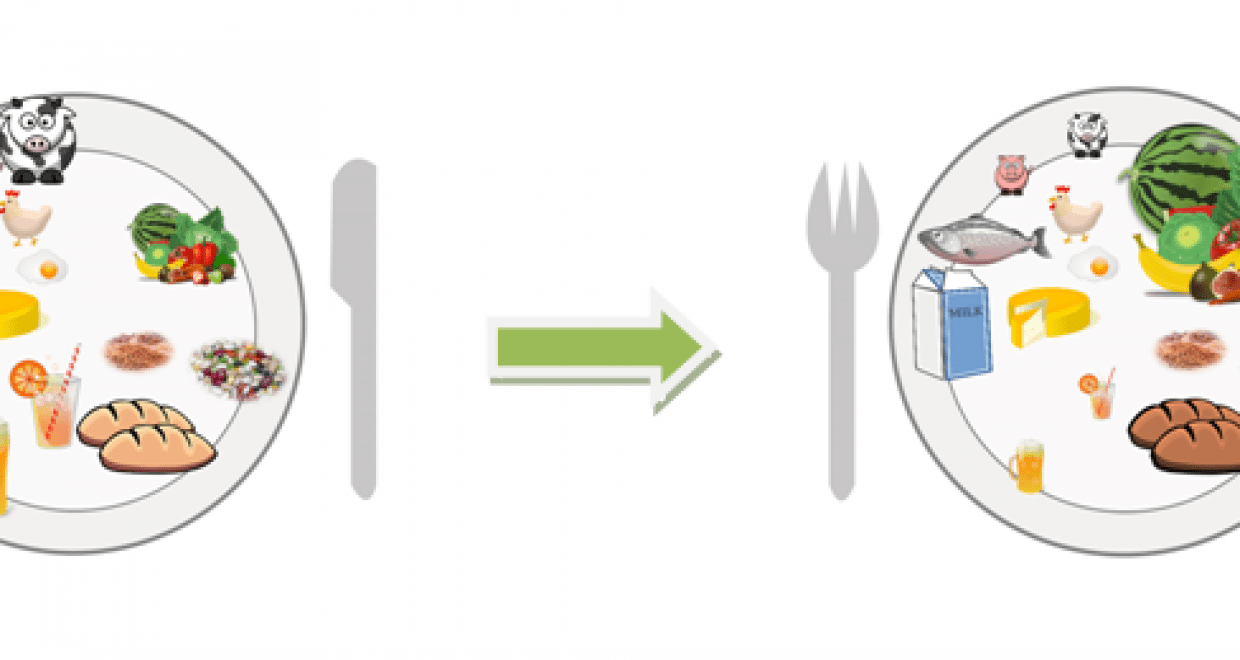Together with your neighbours towards healthy and environmentally sustainable diets!
Public Health Nutrition Editorial Highlight: ‘Operationalising the health aspects of sustainable diets: a review’
Did you know that in Europe 25% of the chronic non-communicable diseases are attributable to unhealthy diets, and that our food production is responsible for 25% of the world’s greenhouse gas emissions? There is thus an urgent need for dietary improvement.
To facilitate this journey towards more healthy and environmentally sustainable diets, first steps for dietary improvement need to fit within current dietary practices. Examples of such steps can be identified by a benchmarking diet model, meaning that an individual would base their dietary improvements on their peers with a ‘better’ diet than themselves. This implies that dietary improvements rely on the assumption: if you can do it, then I can do it too!
The present study identified diets with stronger adherence to food-based dietary guidelines, and subsequently used these diets to optimise the diets of others for nutrient quality and greenhouse gas emissions, while accounting for dietary preferences.
Using dietary data of ~6,500 adults from four European countries, i.e. Denmark, Czech Republic, Italy and France, we found that the first steps for a more healthy and environmentally sustainable diet can be reached keeping around 70-75% of our current diet. In addition, within the boundaries of current dietary practices, it is possible to achieve a 16% improvement in nutrient quality and a 21% decrease in greenhouse gas emissions.
One drawback is, however, that the challenges of maximising the nutrient quality and minimising the greenhouse gas emissions cannot be achieved simultaneously. Luckily for consumers, the direction of dietary change is the same when aiming at maximum health or minimum environmental impact. In summary, important first steps for dietary improvement are: increase fruit and vegetables, replace refined grains with whole grains, reduce sugar-sweetened and alcoholic beverages, and replace from time to time red and processed meat with poultry, fish, eggs or dairy.
The reduction in, but not elimination of red and processed meat, as proposed in the improved diets, is in line with the food choices of a growing number of consumers identifying themselves as meat reducers or flexitarians. This confirms the feasibility of our improved diet models ,implying that they are easier to implement and communicate to the public than an ‘optimal’ diet, because an optimal diet is for most consumers far beyond reach.
For consumers to accept the message of dietary change, the first steps need to fit within current dietary practices, and in this way benefits to both health and environment can be achieved!
Access the full article here: ‘Operationalising the health aspects of sustainable diets: a review’ by Elly Mertens, Pieter van’t Veer, Gerrit J Hiddink, Jan MJM Steijns and Anneleen Kuijsten.
Click here to view all Editorial Highlights from Public Health Nutrition.






